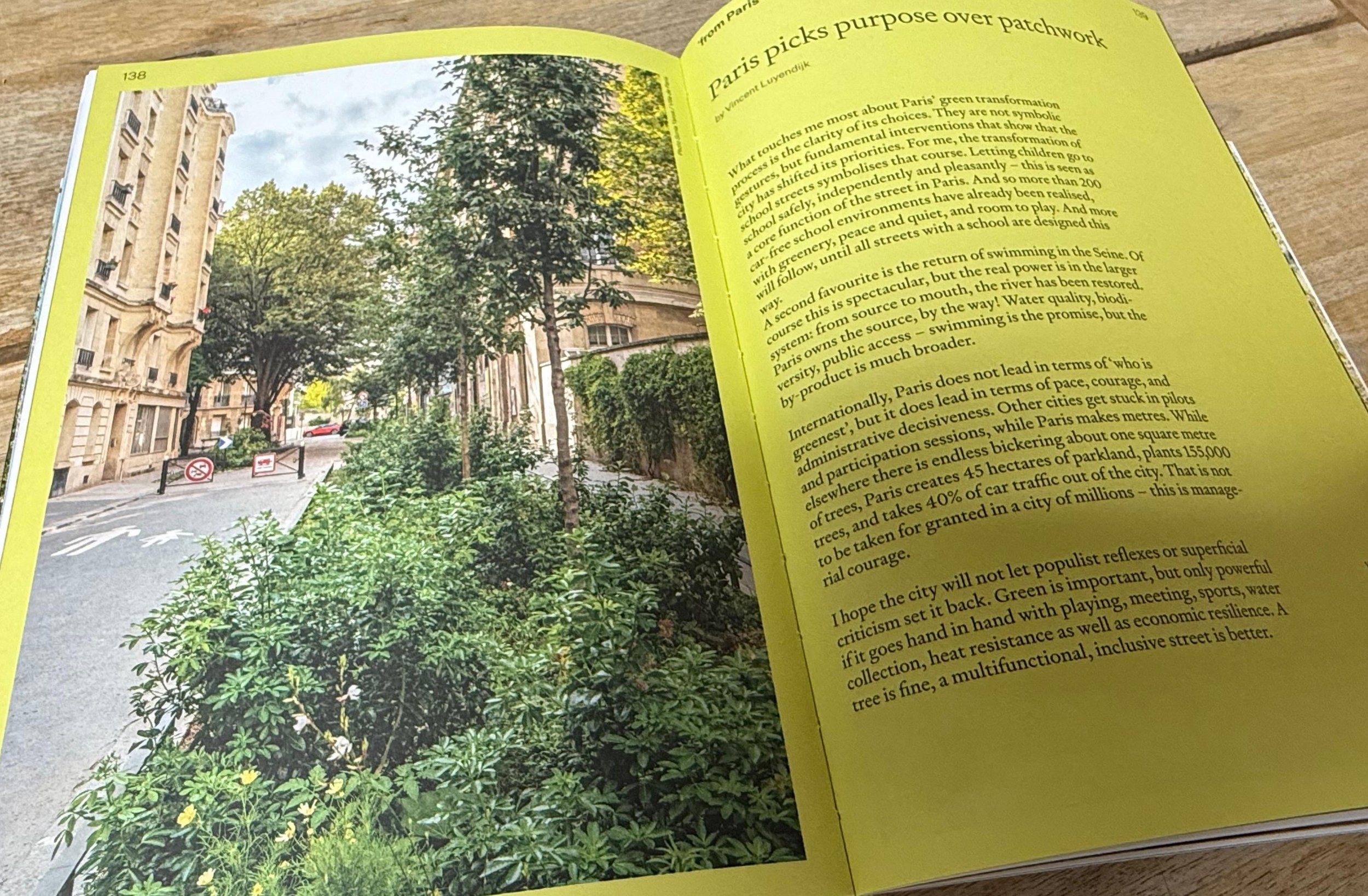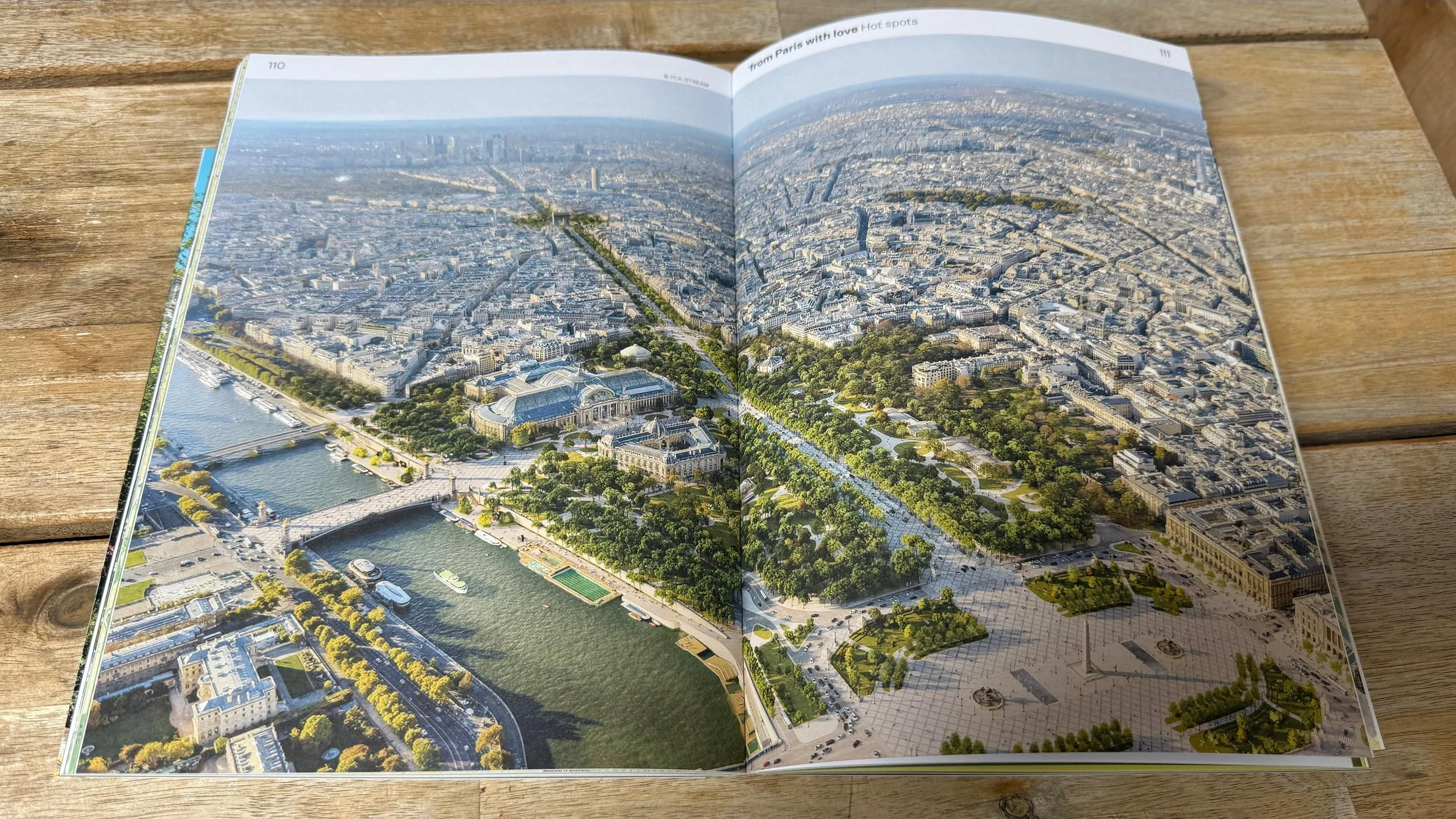Paris picks purpose over patchwork
by Vincent Luyendijk for Scape magazine.
What touches me most about Paris’ green transformation process is the clarity of its choices. They are not symbolic gestures, but fundamental interventions that show that the city has shifted its priorities. For me, the transformation of school streets symbolises that course. Letting children go to school safely, independently and pleasantly – this is seen as a core function of the street in Paris. And so more than 200 car-free school environments have already been realised, with greenery, peace and quiet, and room to play. And more will follow, until all streets with a school are designed this way.
A second favourite is the return of swimming in the Seine. Of course this is spectacular, but the real power is in the larger system: from source to mouth, the river has been restored. Paris owns the source, by the way! Water quality, biodiversity, public access – swimming is the promise, but the by-product is much broader.
Internationally, Paris does not lead in terms of ‘who is greenest’, but it does lead in terms of pace, courage, and administrative decisiveness. Other cities get stuck in pilots and participation sessions, while Paris makes metres. While elsewhere there is endless bickering about one square metre of trees, Paris creates 45 hectares of parkland, plants 155,000 trees, and takes 40% of car traffic out of the city. That is not to be taken for granted in a city of millions – this is managerial courage.
I hope the city will not let populist reflexes or superficial criticism set it back. Green is important, but only powerful if it goes hand in hand with playing, meeting, sports, water collection, heat resistance as well as economic resilience. A tree is fine, a multifunctional, inclusive street is better.
The greening revolution – from Paris with love
Paris, the city of revolutions, of the Impressionists, the World’s Fairs and the Olympics, of Haussmann’s boulevards, of the Bois de Boulogne, the metro, and the Seine. Paris, also the densely built-up city with so little greenery per inhabitant. Heat stress is a problem there like nowhere else.
But under the leadership of Mayor Anne Hidalgo, a veritable green revolution is currently under way in the French capital. In many streets, the car is disappearing, and the pedestrian is being given space – now surrounded by plants and trees. On squares and traffic circles, urban forests are rapidly being planted, old train routes are being transformed into long strips of parkland, the equally famous and infamous Periferique is being covered over in strategic places. Not to mention Paris' tourist hotspots, such as the environments of the Notre Dame, the Eiffel Tower, the Champs Élysées and the banks of the Seine. All these places are being redeveloped and given a green makeover.
In this issue, we dive into more than 50 projects and take stock. We speak with ecologists, landscape designers and many other experts. Can Paris transform itself into the climate-resilient city of the future, even setting an example for other cities?
You'll soon read about it in the latest edition of 'scape, the international magazine for landscape architecture and urban planning.
From Paris with love.





